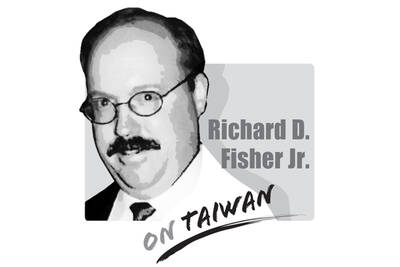On Wednesday last week, US President Donald Trump swung the tariff sword and left the whole world crying out in pain. On Friday the Executive Yuan announced that it would allocate NT$88 billion (US$2.7 billion) to assist industrial and agricultural sectors impacted by the tariffs.
However, the Chinese Nationalist Party (KMT) is making increasingly costly and exorbitant demands, suggesting that last year’s NT$528.3 billion tax revenue surplus be put to use.
It was not that long ago that the KMT was arguing for something else entirely. KMT caucus whip Fu Kun-chi (傅?萁) had called for a universal cash payment of NT$10,000 to every taxpayer, while KMT caucus deputy secretary-general Wang Hung-wei (王鴻薇) in February said that the universal cash subsidy proposal would definitely be addressed during the current legislative session — even if it meant calling an extraordinary session or extending the current one.
However, distributing NT$10,000 to every taxpayer would be an immediate expense of NT$230 billion — nearly half of the total surplus.
If the government did this, what surplus funds would it have left to cope with Trump’s tariff storm? In hindsight, it is fortunate that the government pushed back on the KMT’s proposal.
This situation makes it clear that the KMT has no clue how to run a country — it only knows how to react.
The tariff shock has only just begun, and the KMT should share in these difficult times rather than proposing such horrible ideas.
Huang Wei-ping works in public service and has a master’s degree from the Fletcher School of Law and Diplomacy at Tufts University in the US.
Translated by Kyra Gustavsen

On Sept. 3 in Tiananmen Square, the Chinese Communist Party (CCP) and the People’s Liberation Army (PLA) rolled out a parade of new weapons in PLA service that threaten Taiwan — some of that Taiwan is addressing with added and new military investments and some of which it cannot, having to rely on the initiative of allies like the United States. The CCP’s goal of replacing US leadership on the global stage was advanced by the military parade, but also by China hosting in Tianjin an August 31-Sept. 1 summit of the Shanghai Cooperation Organization (SCO), which since 2001 has specialized
In an article published by the Harvard Kennedy School, renowned historian of modern China Rana Mitter used a structured question-and-answer format to deepen the understanding of the relationship between Taiwan and China. Mitter highlights the differences between the repressive and authoritarian People’s Republic of China and the vibrant democracy that exists in Taiwan, saying that Taiwan and China “have had an interconnected relationship that has been both close and contentious at times.” However, his description of the history — before and after 1945 — contains significant flaws. First, he writes that “Taiwan was always broadly regarded by the imperial dynasties of
The Chinese Communist Party (CCP) will stop at nothing to weaken Taiwan’s sovereignty, going as far as to create complete falsehoods. That the People’s Republic of China (PRC) has never ruled Taiwan is an objective fact. To refute this, Beijing has tried to assert “jurisdiction” over Taiwan, pointing to its military exercises around the nation as “proof.” That is an outright lie: If the PRC had jurisdiction over Taiwan, it could simply have issued decrees. Instead, it needs to perform a show of force around the nation to demonstrate its fantasy. Its actions prove the exact opposite of its assertions. A
A large part of the discourse about Taiwan as a sovereign, independent nation has centered on conventions of international law and international agreements between outside powers — such as between the US, UK, Russia, the Republic of China (ROC) and Japan at the end of World War II, and between the US and the People’s Republic of China (PRC) since recognition of the PRC as the sole representative of China at the UN. Internationally, the narrative on the PRC and Taiwan has changed considerably since the days of the first term of former president Chen Shui-bian (陳水扁) of the Democratic